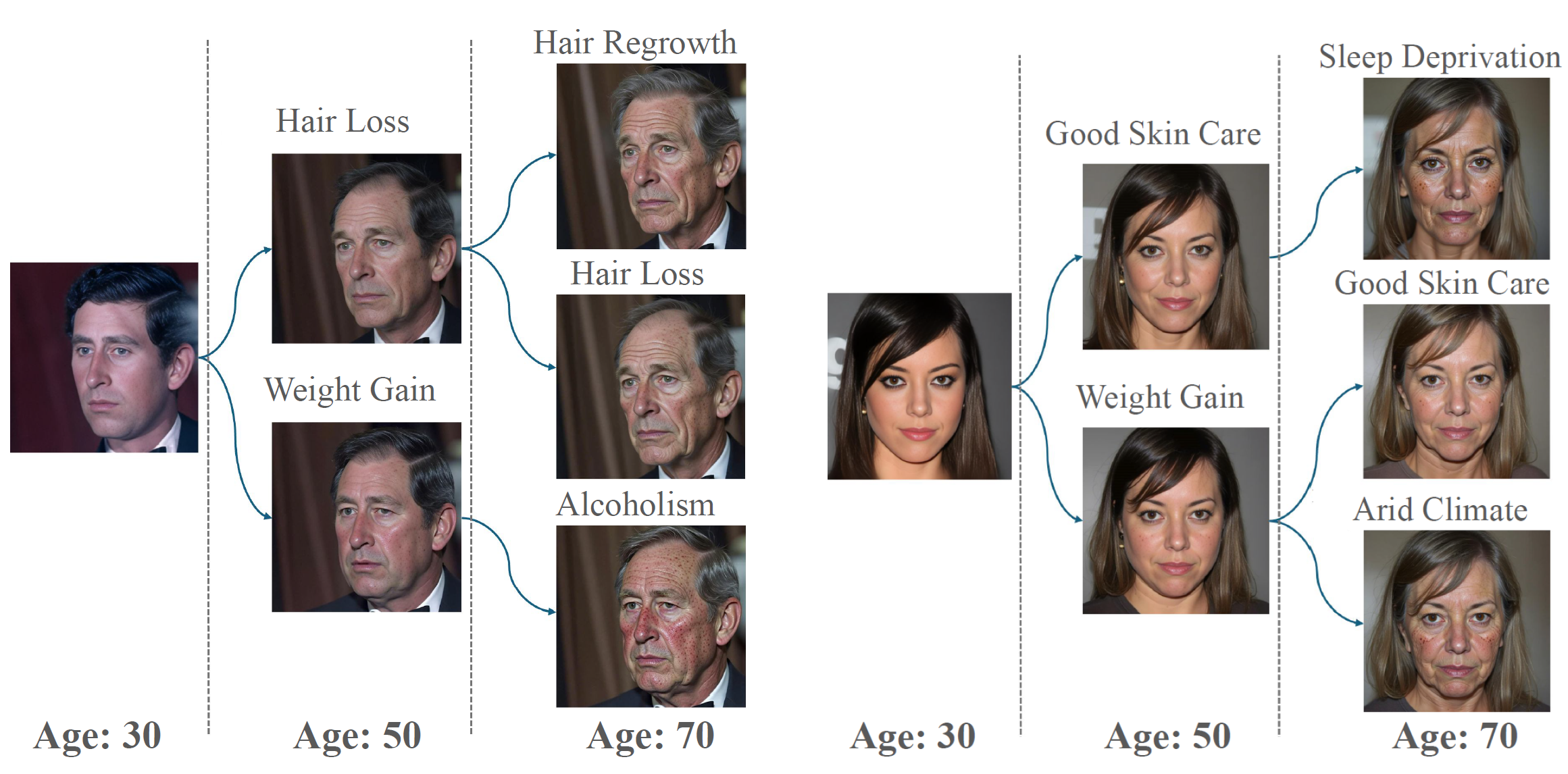This research was supported in part by Lenovo Research (Morrisville, NC). We gratefully acknowledge the invaluable support and assistance of the members of the Mobile Technology Innovations Lab. This work was also supported in part by the National Science Foundation under Grant No.2213335.
The Aging Multiverse: Generating Condition-Aware Facial Aging Tree via Training-Free Diffusion
* Equal contribution









